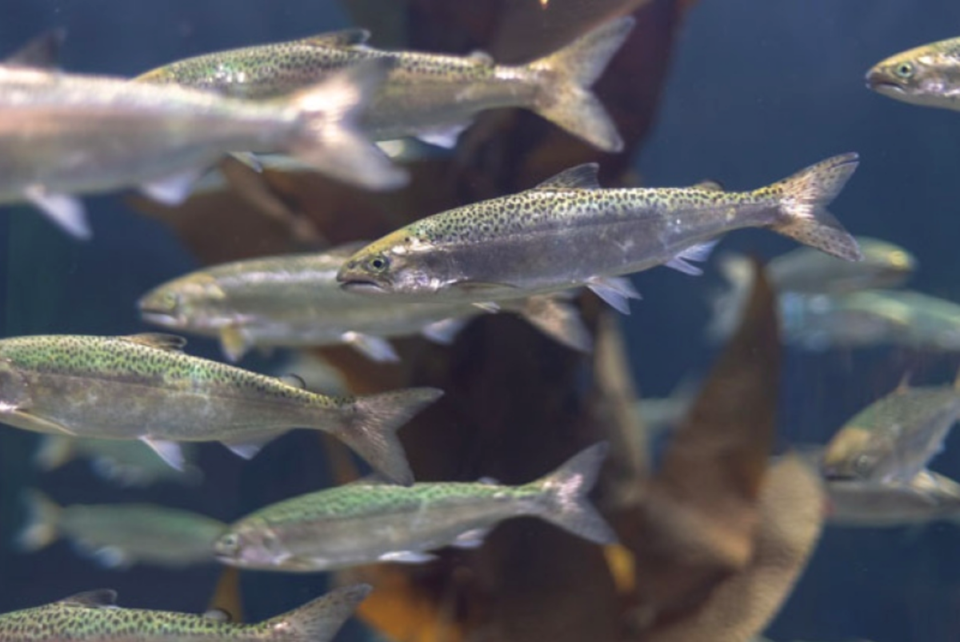The Heiltsuk First Nation from Bella Bella is calling on Fisheries and Oceans Canada to order open-net salmon farms to close and to shut down commercial and recreational salmon fishing next year, only opening fisheries after “conservation and food, social, and ceremonial needs can be met.”
“The public needs to be made aware that the salmon populations on the B.C. coast are experiencing the lowest returns in decades. Here on the central coast, many of our salmon systems are at risk of going extinct this year,” Heiltsuk councillors stated in a press release.
Near Bella Bella, the Skeena River has had just over 1.1 million returns. It’s typically the second largest salmon run, second to the Fraser River. The Skeena takes the top number this year, however.
Fraser River sockeye returns are, again, record-breakingly low, with an estimated 293,000 according to the Pacific Salmon Foundation, a Canadian-U.S. government agency.
It’s the lowest season on record — and their records go back to 1893. According to the commission, average sockeye returns in the Fraser River between 1980 and 2014 were 9.6 million, with a low of 2 million and a whopping high of 28 million in 2010. Those numbers no longer exist, the commission’s chief of fisheries management science Catherine Michielsens said.
“In the last five years, we had the three lowest returns on record. In 2016, that was our previous lowest return, and we saw 894,000. Last year was our next record: 493,000. And this year we are going even lower to 293,000,” Michielsens said.
This year they had predicted just under a million returns to the Fraser, based on births from four years ago. But the actual results have been staggeringly low, at less than a third of a million.
Also near Bella Bella is the Nass River, which saw a below-average return of 300,000 sockeye.
Researchers suggest there are several factors involved in the decreasing returns, including ocean warming, habitat loss, sea lice, and the Big Bar landslide which blocked salmon migration routes.
Sea lice numbers have risen dramatically in recent years, at least partially connected to fish farms in B.C.
Lice are not usually a problem for adult fish, but can be lethal for juvenile salmon migrating past fish farms where lice are found on the growing Atlantic salmon. Fish farms regularly count lice, especially during the out migration period, and are required to take action if lice numbers are too high. Shawn Hall, a spokesperson for the BC Salmon Farmers Association countered that research they commissioned have shown nominal increase — and sometimes a decrease — in the number of sea lice on juvenile salmon, when they are tested before and after passing a fish farm. He also referenced a DFO report that pointed to climate change as the primary factor leading to wild salmon declines.
“We’re not far apart, really, we share the same concerns about wild salmon, about the ocean,” he said.
“Most of the salmon that we farm is done so in agreement with a local First Nation. I guess what gets lost in all of this is that salmon farming is really important for B.C.,” he added, referring to the increasing ratio of farmed to wild fish in B.C. food, as well as the thousands of jobs provided.
The Cohen Commission, which investigated then-record low Fraser sockeye returns in 2009 gave Fisheries and Oceans Canada until this Sept. 30 to determine whether fish farms caused any risk to wild fish. If there is a risk, the fish farms in the Discovery Island — between the mainland and mid-Vancouver Island — are to be closed down.
The Heiltsuk Nation is also calling for more investment in habitat restoration for salmon, research to find out why these salmon are not surviving in the ocean, and emergency planning.
Zoë Ducklow is a Local Journalism Initiative reporter with the North Island Gazette.



